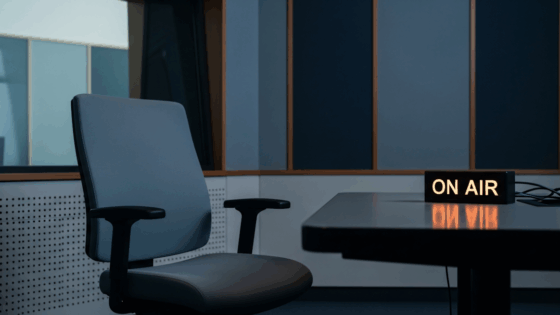on
BY SIMONE J. SMITH
Your son/daughter walks in and sighs heavily, dropping their school bag on the floor before taking a seat next to you. “I don’t know, Mom. I’ve been feeling… weird lately.”
Sensing the seriousness in your child’s voice, you set aside what you are doing, and give them your full attention. “Weird how?”
“I don’t know. Like, one minute I’m okay, and the next, I’m angry, or sad for no reason. And then there are times when I feel like nobody understands me. Like I’m alone in this world.”
You listen intently, concerned. “Have you talked to anyone about how you’re feeling?”
“No… I thought it was just teenage stuff, you know? But… I did some research online, and… I think I might have something called borderline personality disorder.”
“I’m sorry you’re feeling this way, but what makes you think you have this disorder?”
“Well, I have a lot of the symptoms… like the mood swings, fear of abandonment, and feeling empty inside, and I remember you mentioning dad’s struggles with mental health. Maybe it’s genetic?”
Your mind races as you recall your ex’s battle with mental illness. You nod slowly, absorbing your child’s words.
It is challenging having these discussions, especially when it is with your child. We hear terminology like bipolar disorder, and borderline personality disorder tossed around, and without a knowledge base, we can utilize these labels in a manner that is hurtful, and without innerstanding.
Before we get into understanding what you might be experiencing with your teenager, or a loved one, let’s take a look at what research says about the topic. “Understanding Borderline Personality Disorder Across Sociocultural Groups: Findings, Issues, and Future Directions,” researched by Andrada D. Neacsiua, Jeremy W. Eberleb, Shian-Ling Kengc, Caitlin M. Fangd and M. Zachary Rosenthala suggested that cultural influences affect the development and course of many mental health problems including mood, anxiety, eating, substance use, and personality disorders.
Borderline personality disorder (BPD) is a severe condition that often includes suicidal behavior, comorbidity with other psychiatric conditions, poor psychosocial functioning, and frequent use of costly mental health services. Adults who meet diagnostic criteria for BPD commonly use inpatient and outpatient mental health services yet are widely characterized as being difficult-to-treat and may benefit less than others from psychotherapy.
In the research study titled “The Cumulative Effects of Bullying Victimization in Childhood and Adolescence on Borderline Personality Disorder Symptoms and Post-Traumatic Stress Disorder,” researcher Madelaine Erazo found that in emerging adulthood individuals who were bullied by their peers in childhood and adolescence were more likely to have elevated symptoms of BPD in adulthood. High levels of bullying victimization are explained as a form of relational trauma. Results suggest that peer relations are powerful enough to lead to subsequent personality pathology.
BPD is presented amongst adolescents and adults, and vary significantly by gender, with girls and women being more likely to receive a diagnosis than boys and men (APA, 2013; Kaess et al., 2014; Torgersen et al., 2001)
Before you jump to conclusions and self-diagnose a mental health disorder, it’s crucial to comprehend the process through which mental health professionals utilize the DSM-V (Diagnostic and Statistical Manual of Mental Disorders, Fifth Edition) for diagnosis.
The DSM-V serves as a standardized tool that clinicians use to identify and classify mental health disorders based on specific criteria. These criteria encompass various aspects of an individual’s: thoughts, feelings, behaviors, and experiences, and usually a diagnosis is made if an individual displays five out of nine, or ten symptoms designated as being part of that disorder.
Identifying borderline personality disorder (BPD) in teenagers can be challenging, but there are several signs parents can watch out for. Firstly, fluctuations in mood and intense emotional responses that seem disproportionate to the situation may indicate BPD. Look for patterns of unstable relationships, such as rapid shifts between idealizing and devaluing others.
Teens with BPD often struggle with impulsivity, engaging in risky behaviors like substance abuse, reckless driving, or self-harm. They may also exhibit chronic feelings of emptiness, and difficulty establishing a sense of identity. Pay attention to frequent outbursts of anger, fear of abandonment, and a tendency towards self-destructive behaviors. It is also important to be aware of the five areas of dysregulation. According to Psychologist Tchiki Davis, Ph.D., dysregulation is defined as “Any excessive or otherwise poorly managed mechanism or response.” The five that you need to be aware of are:
Emotion Dysregulation:
This involves difficulties in managing and expressing emotions appropriately. Individuals may experience intense emotions, struggle to modulate their emotional responses, and have difficulties in effectively regulating their emotions in various situations.
Behavioral Dysregulation:
This refers to challenges in controlling behavior, impulsivity, and difficulty in adhering to social norms, or rules. It may manifest as impulsive actions, aggression, self-harm, or difficulty in maintaining appropriate boundaries.
Cognitive Dysregulation:
This involves difficulties in cognitive processes such as: attention, concentration, memory, and decision-making. Individuals may experience racing thoughts, cognitive rigidity, distractibility, or difficulties in problem-solving and planning.
Sensory Dysregulation:
This refers to atypical responses to sensory stimuli, such as hypersensitivity or hyposensitivity to sensory input (e.g., touch, sound, light). Individuals may become overwhelmed or distressed by sensory stimuli that others find tolerable or may seek out intense sensory experiences.
Physiological Dysregulation:
This encompasses disruptions in physiological processes, including sleep-wake cycles, appetite regulation, and autonomic nervous system functioning. It may manifest as: sleep disturbances, appetite changes, gastrointestinal issues, or difficulties in regulating arousal levels.
Speaking to a doctor about what you’re feeling, particularly regarding your mental health, is crucial; it opens up avenues for accessing additional resources and support networks that can further aid in your recovery journey. Doctors are trained professionals who are supposed to provide an accurate diagnosis and appropriate treatment plan based on your symptoms. Respectable doctors have the expertise to distinguish between normal fluctuations in mood, and more serious mental health conditions. discussing your feelings with a doctor can help alleviate the burden of carrying them alone, providing a safe and supportive space to express yourself without judgment.
Early intervention is key in managing mental health issues effectively, and doctors can offer timely interventions, whether it’s therapy, medication, or lifestyle changes.
Stay in the loop with exclusive news, stories, and insights—delivered straight to your inbox. No fluff, just real content that matters. Sign up today!
We, as humans are guaranteed certain things in life: stressors, taxes, bills and death are the first thoughts that pop to mind. It is not uncommon that many people find a hard time dealing with these daily life stressors, and at times will find themselves losing control over their lives. Simone Jennifer Smith’s great passion is using the gifts that have been given to her, to help educate her clients on how to live meaningful lives. The Hear to Help Team consists of powerfully motivated individuals, who like Simone, see that there is a need in this world; a need for real connection. As the founder and Director of Hear 2 Help, Simone leads a team that goes out into the community day to day, servicing families with their educational, legal and mental health needs.Her dedication shows in her Toronto Caribbean newspaper articles, and in her role as a host on the TCN TV Network.













